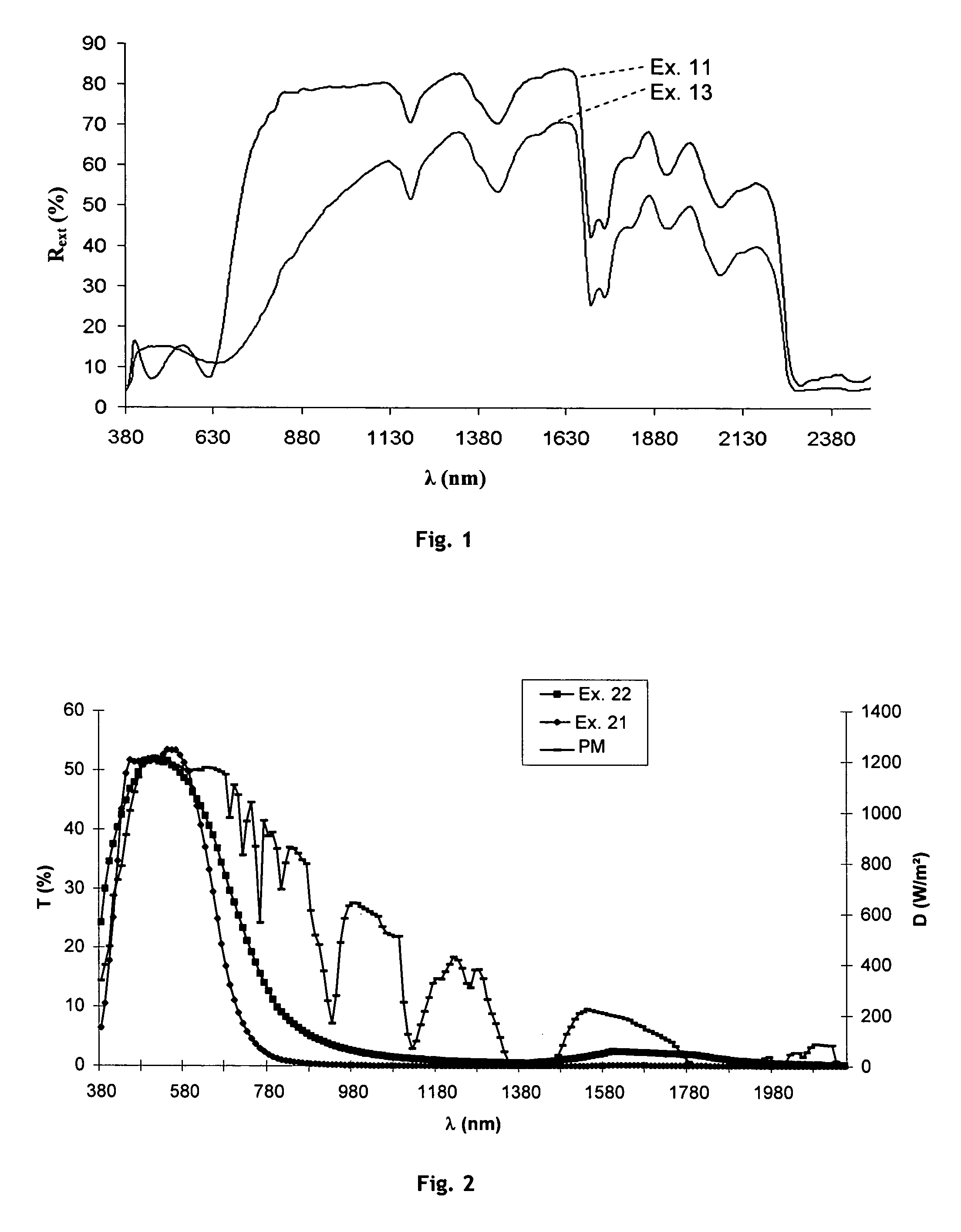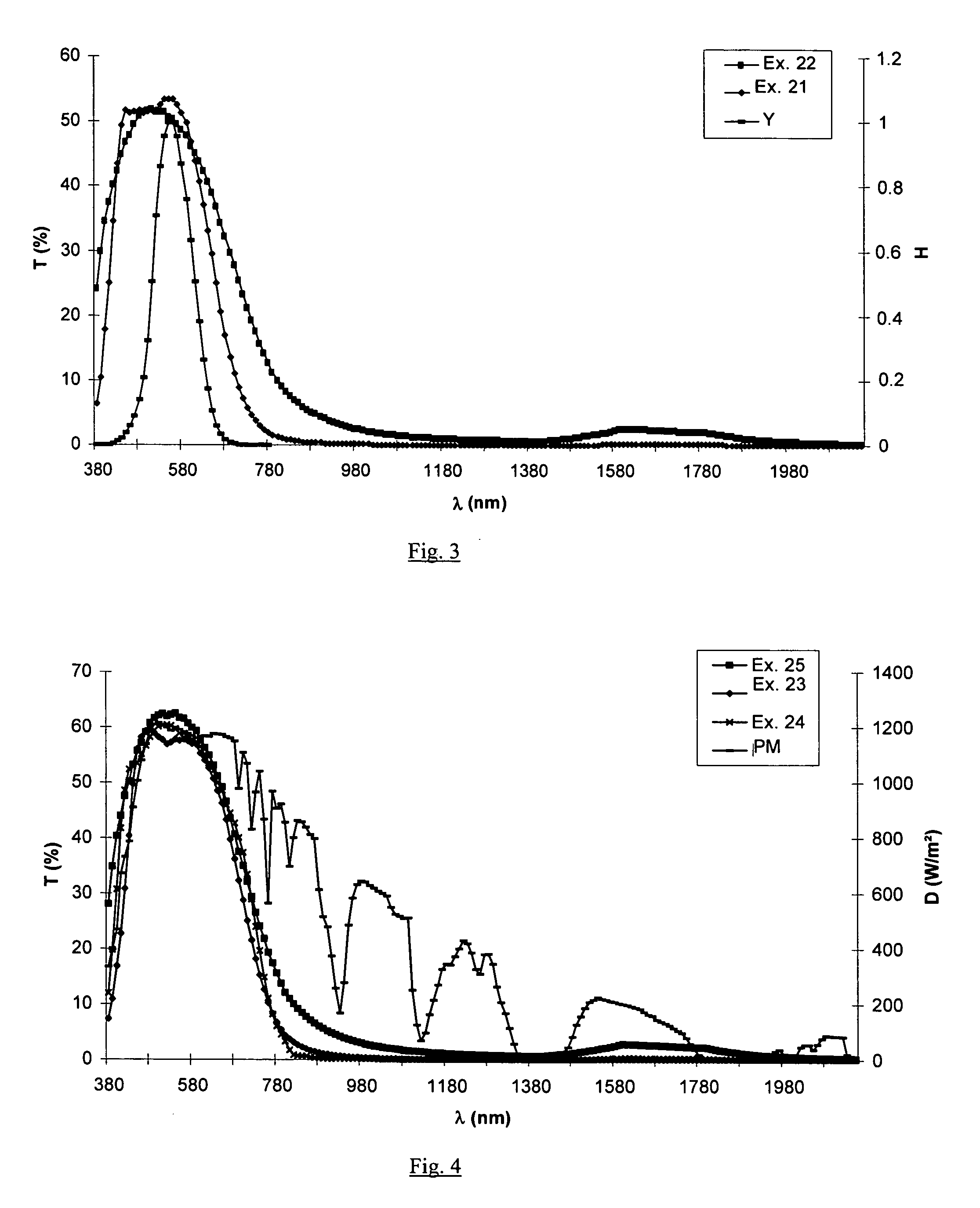Transparent substrate which can be used alternatively or cumulatively for thermal control, electromagnetic armour and heated glazing
a technology of transparent substrates and electromagnetic shielding, which is applied in the direction of coatings, electrical appliances, basic electric elements, etc., can solve the problems of stack resistivity that cannot be used to produce heated windows or electromagnetically shielded windows of acceptable appearance, stack resistivity that cannot achieve true effective electromagnetic shielding,
- Summary
- Abstract
- Description
- Claims
- Application Information
AI Technical Summary
Benefits of technology
Problems solved by technology
Method used
Image
Examples
example 11
[0114 According to the Invention Three-Layer:
[0115]
LayerSi3N4ZnOAg1ZnOSi3N4ZnOAg2ZnOSi3N4ZnOAg3ZnOSi3N4Thickness37712.5849712.5853712.5829(nm)outside / glass (2.1 mm) / PVB (0.76 mm) / Ag3 / Ag2 / Ag1 / glass (1.6 mm) / inside
example 12
[0116 According to the Invention, Three-Layer:Same stack as in Example 11 but also with a titanium overblocker on top of each functional layer (thickness around 0.5 nm to 1 nm).
[0117]Example 13, Two-Layer Comparative Example:
[0118]
LayerSi3N4ZnOAg1ZnOSi3N4ZnOAg2ZnOSi3N4Thickness248867087626(nm)outside / glass (2.1 mm) / PVB (0.76 mm) / Ag3 / Ag2 / Ag1 / glass (1.6 mm) / inside with, in addition, a titanium underblocker beneath each functional layer (thickness around 0.5 nm to 1 nm)
example 14
[0119 According to the Invention, Three-Layer:
[0120]
LayerSi3N4ZnOAg1ZnOSi3N4ZnOAg2ZnOSi3N4ZnOAg3ZnOSi3N4Thickness37712.5852713.5852714831(nm)outside / glass (2.1 mm) / PVB (0.76 mm) / Ag3 / Ag2 / Ag1 / glass (1.6 mm) / inside
[0121]Measured Technical Characteristics of the Laminated Glazing:
[0122]
R□TLTEExt. RLREExample(Ω / □)(%)(%)(%)a*(Rext)b*(Rext)(%)111.0970.430.412.1−10.911.746.0121.0070.130.814.2−9.37.946.1134.6076.146.117.8−4.8−1.929.8141.0070.531.411.5−7.52.744.8
PUM
| Property | Measurement | Unit |
|---|---|---|
| temperature | aaaaa | aaaaa |
| total thickness | aaaaa | aaaaa |
| thickness | aaaaa | aaaaa |
Abstract
Description
Claims
Application Information
 Login to View More
Login to View More - R&D
- Intellectual Property
- Life Sciences
- Materials
- Tech Scout
- Unparalleled Data Quality
- Higher Quality Content
- 60% Fewer Hallucinations
Browse by: Latest US Patents, China's latest patents, Technical Efficacy Thesaurus, Application Domain, Technology Topic, Popular Technical Reports.
© 2025 PatSnap. All rights reserved.Legal|Privacy policy|Modern Slavery Act Transparency Statement|Sitemap|About US| Contact US: help@patsnap.com



